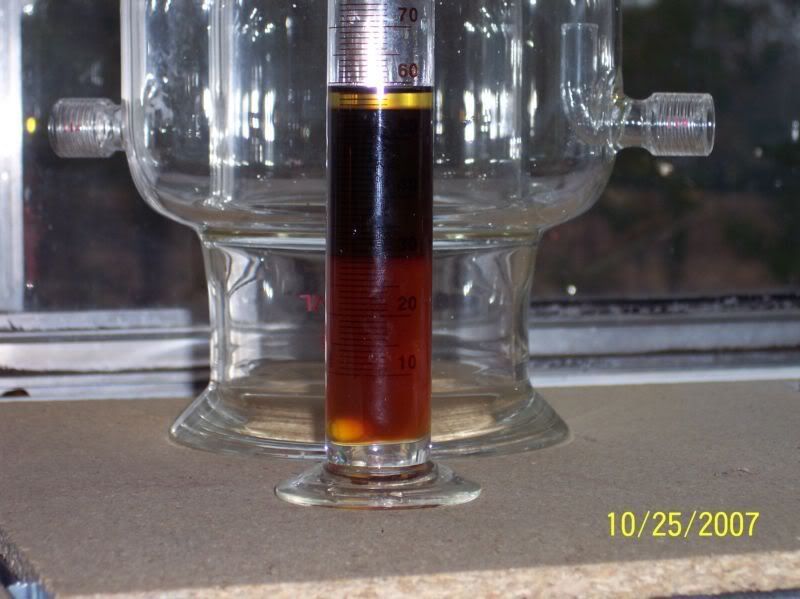Originally posted by BromicAcid
I know drone already mentioned this, but maybe less H<sub>2</sub>O would have to be used than he used so long as one gave it enough time
to seperate. Of course you still have the problem of water in your ethanol though. Maybe some sort of polyol might work and then distillation could
be accomplished simply. Or like evil_lurker suggested, sulfuric acid. |





